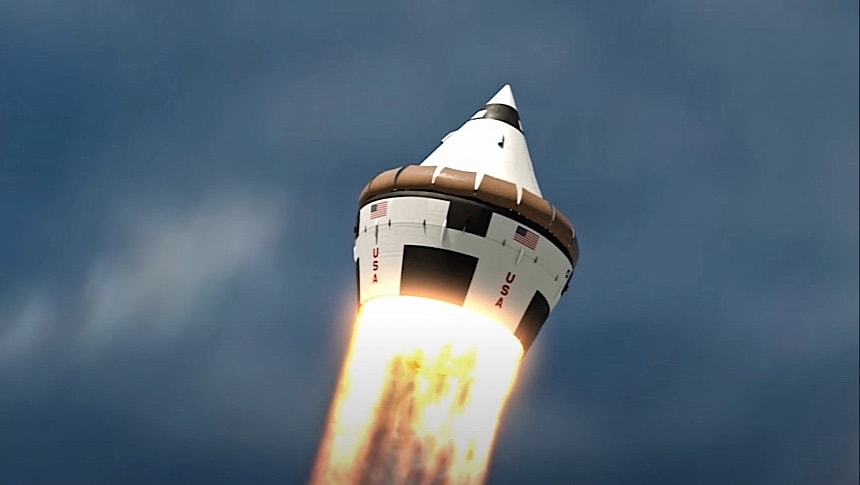Generally speaking the rockets in use today in space exploration are not airbreathers. They are built in such a way that they generally carry both the fuel and the oxidizer they need to work, and that's enough in most cases. But there was a time at the beginning of space exploration when more designs were being studied, including one that allowed the hardware to take in air and generate extra thrust.
We've seen over the past few years many rocket concepts come to life thanks to modern technology. Creative minds have managed to give us a glimpse of how such designs would have looked even if they had never left the drawing board.
Such is the case of the Martin Renova, a design from the 1960s that, unlike the rockets that did make it into this world, was an airbreather in some respects.
What that means is that the cone at the rocket's top, essentially its payload fairing, featured a series of inlets for air to get in as the rocket ascended through the atmosphere. The stuff got mixed not with the fuel, but with the exhaust. In doing so air got heated and expanded, providing additional thrust for the rocket on its way up.
The rocket concept was technically powered by an unknown number of conventional rocket engines arranged in a circular pattern around the edges of the rocket's rear end and wrapped in a common duct. In between them sat the hydrogen and oxygen tanks.
Somewhere in there was also a shroud of sorts, the magical place where the mixing of air and exhaust happened. Once the contraption reached the space around our planet, this shroud got ejected, and the intakes at the other end got closed.
As per the data that survived from the 1960s, the Renova would have been capable of carrying a payload of about one million pounds (about 450,000 kg) to orbit, making it a true heavy lifter.
The Renova (a term which is supposed to stand for reusable Nova) was not a one-time deal like the rockets of its time, but partly reusable. As a single-stage to-orbit machine, it would be recoverable, as the booster section of the rocket would come down back to Earth attached to parachutes and splash somewhere in the Ocean. It would then be refitted with the payload and other sections that were not reusable, and put to work once more.
It's not exactly clear how far along this concept came to reality, but we do know it was never sent into production. That means the only way to experience the design now is to have a look at it in CGI, just like we have below in this video from Hazegrayart.
Such is the case of the Martin Renova, a design from the 1960s that, unlike the rockets that did make it into this world, was an airbreather in some respects.
What that means is that the cone at the rocket's top, essentially its payload fairing, featured a series of inlets for air to get in as the rocket ascended through the atmosphere. The stuff got mixed not with the fuel, but with the exhaust. In doing so air got heated and expanded, providing additional thrust for the rocket on its way up.
The rocket concept was technically powered by an unknown number of conventional rocket engines arranged in a circular pattern around the edges of the rocket's rear end and wrapped in a common duct. In between them sat the hydrogen and oxygen tanks.
Somewhere in there was also a shroud of sorts, the magical place where the mixing of air and exhaust happened. Once the contraption reached the space around our planet, this shroud got ejected, and the intakes at the other end got closed.
As per the data that survived from the 1960s, the Renova would have been capable of carrying a payload of about one million pounds (about 450,000 kg) to orbit, making it a true heavy lifter.
The Renova (a term which is supposed to stand for reusable Nova) was not a one-time deal like the rockets of its time, but partly reusable. As a single-stage to-orbit machine, it would be recoverable, as the booster section of the rocket would come down back to Earth attached to parachutes and splash somewhere in the Ocean. It would then be refitted with the payload and other sections that were not reusable, and put to work once more.
It's not exactly clear how far along this concept came to reality, but we do know it was never sent into production. That means the only way to experience the design now is to have a look at it in CGI, just like we have below in this video from Hazegrayart.













